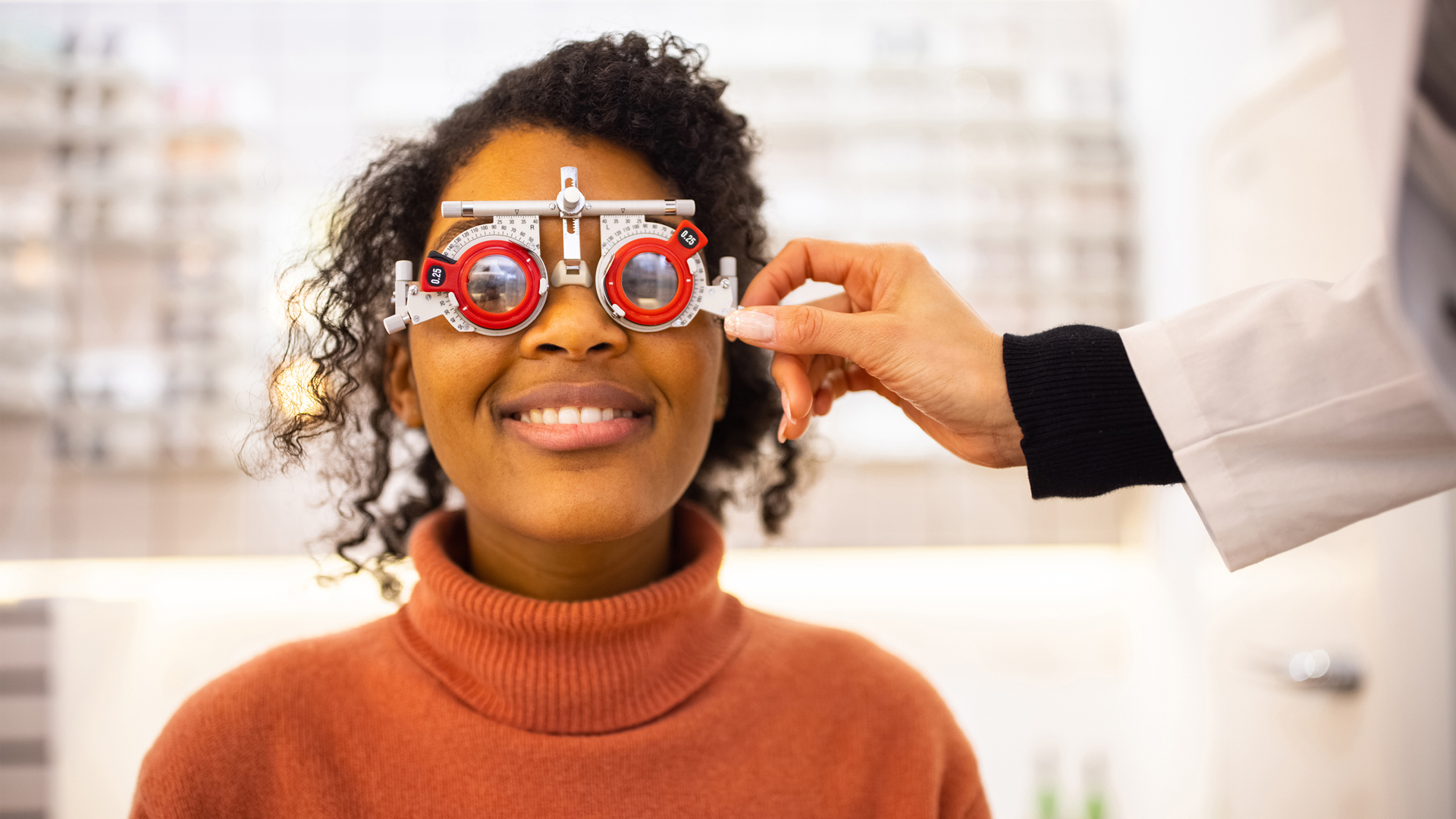Vitamin A: Sources, benefits & deficiency
Everything you need to know about Vitamin A, including where to get it from your diet

Vitamins are crucial for building, repairing and maintaining healthy tissues and cells, and vitamin A is particularly important for vision, skin and bones. Also known as retinol (because it produces the pigments in the retina of the eye), vitamin A is a fat-soluble nutrient. This means it’s absorbed into the body with dietary fat, and then stored in body tissue for later use.
Taking big doses of vitamin A can be toxic, but your body only converts as much as it needs. You can get vitamin A naturally from foods or take it in supplement form. It has several functions, from helping the body’s immune system to fight against illness and infection, to supporting healthy vision, teeth, skin and skeletal and soft tissue.
Good sources of vitamin A include cheese, eggs, oily fish, milk, yogurt and liver (although you should avoid liver if pregnant). You can also get vitamin A by consuming plant sources of beta-carotene – found in leafy veg and yellow fruit such as mango, papaya and apricots – as the body can convert this into retinol.
In this article, we speak to registered dietitian Nigel Denby, from Harley Street At Home, to find out more about vitamin A, its sources, benefits and how to spot signs of a deficiency.
What are the benefits of vitamin A?
According to Denby, vitamin A is important for helping maintain the immune system, supporting your vision (particularly your vision in dull light) and keeping skin healthy.
“Vitamin A is an antioxidant, which means it protects the body from damage caused by free radicals,” he explains. “Free radicals are destructive molecules, which cause oxidative damage and can adversely affect proteins and DNA in our body. This can result in inflammation, cancer and heart disease.”
Other benefits of vitamin A include:
Reduced risk of blindness
An age-related eye disease study by the National Eye Institute found that taking high levels of antioxidants, such as vitamin A, along with zinc, might reduce the risk of developing advanced age-related macular degeneration by as much as 25%. Age-related macular degeneration is the most common cause of loss of vision in the older population.

Reduced acne and sun damage
Vitamin A helps to promote and maintain a healthy dermis and epidermis – the top two layers of the skin. When applied topically, there’s evidence that retinoids (a class of compounds derived from vitamin A) can be used to treat acne and certain signs of sun damage, known as photo aging.
However, a commonly experienced side effect of topical application of retinoids is ‘retinoid dermatitis’, which can lead to skin irritation and scarring, but adjusting the dose can reduce adverse skin reactions.
Stronger teeth and bones
Vitamin A helps your body absorb calcium so it’s important for oral and bone health. It strengthens tooth enamel and promotes the healthy mucous in the mouth that coats cheeks and gums, making it less susceptible to infection and disease.
It’s also important for healthy bones. Both osteoblasts (bone building cells) and osteoclasts (bone breaking down cells) need vitamin A, but clinical research has found that higher vitamin A levels are linked to lower bone density and fractures.

Protection from free radical damage
As we’ve heard, Vitamin A is an antioxidant, protecting cells from free radical damage that can cause illness and aging. Although there is some evidence that antioxidants prevent cancer, taking vitamin A supplements is not effective in prevention, according to the National Cancer Institute.
But taking all-natural beta carotene from foods could help, according to an international study in peer reviewed journal Antioxidants.
- Related: What do antioxidants do for your skin?
- Related: 10 antioxidant rich foods to include in your diet
How much vitamin A should you consume?
Recommended dietary intakes for vitamin A depend on age, gender and reproductive status.
The Recommended Dietary Allowance (RDA) for adults 19 years and older is 900 micrograms (mcg) for men and 700 mcg for women.
Taking too much vitamin A can be toxic, so it’s important not to exceed the ‘Tolerable Upper Intake Level’ of 3,000 mcg per day for adults. Overdose of vitamin A has been associated with a diverse range of symptoms from skin and hair loss to neurological problems and gastrointestinal complaints. Long-term excess, known as hypervitaminosis A or vitamin A toxicity, can also cause liver damage and birth defects in a fetus.
What are the best sources of vitamin A?
According to Denby, there are two forms of vitamin A we can obtain from our diet:
1) Retinol, which is preformed vitamin A
2) Beta-carotene, which is a precursor to vitamin A, or more specifically retinol (i.e. beta-carotene must be converted by the body into vitamin A).

Both retinol and beta-carotene are further processed in the body in order to be used.
“Retinol is only found in animal-based food sources, including liver, cheese, milk, yogurt, eggs and oily fish,” he says. “On the other hand, beta-carotene is found in plant-based foods, and is responsible for the yellow and orange color in foods such as carrots, mangos, papayas, apricots, butternut squash, sweet potatoes and bell peppers.
“Dark green leafy vegetables, such as spinach, also contain beta-carotene despite not being orange. Essentially, look for yellow, red and green veg.”
Most people should be able to get their daily dose of vitamin A from their diet and therefore won’t need to supplement.
Signs of vitamin A deficiency
Vitamin A deficiency is rare in the U.S. but it is common in many developing countries. It’s the leading cause of childhood blindness in Africa and Southeast Asia and between 250,000 and 500,000 children around the world with vitamin A deficiency become blind every year, according to the World Health Organization.
Sadly, half of those children die within 12 months of losing their sight, according to the WHO.
“Signs of vitamin A deficiency include poor nighttime vision, dry eyes, hair and mouth, dry and itchy skin, brittle nails, diarrhea, fatigue and more frequent infections,” says Denby. “The risk of respiratory infections, such as pneumonia is also increased.”
What happens if you take too much vitamin A?
“Our bodies are clever, meaning you’ll only convert as much beta-carotene into retinol as you need,” says Denby. “Not only this, but your body is able to store any vitamin A that it doesn’t need right away for later use, because vitamin A is fat soluble. However, it's still important not to go absolutely crazy.
“Even though your body can store vitamin A, prolonged periods of excess vitamin A can have adverse effects on bone health, and increase the risk of osteoporosis.”
Other signs of excessive vitamin A intake include nausea, headaches, dizziness, blurred vision and fatigue.
“Long-term high intakes of beta-carotene may lead to your skin gaining a yellow-orange tint. This can easily be reversed by reducing your beta-carotene intake,” adds Denby.
If you’re pregnant, large amounts of vitamin A can harm your unborn baby so it’s best to avoid eating liver or liver products such as pate, as they are very high in the vitamin.
“Vitamin A is teratogenic,” explains Denby, “This means excessive intakes increase the risk of birth defects. Speak to your midwife or health professional if you’re concerned.”
Additional resources
Sign up for the Live Science daily newsletter now
Get the world’s most fascinating discoveries delivered straight to your inbox.

Maddy Biddulph is a freelance health and fitness journalist with over 26 years of experience working for consumer media in the US and UK. As a Level 3 personal trainer and weight loss advisor she is used to trying out and reviewing the latest health and fitness products. At Maddy Biddulph Personal Training, she runs one-to-one and small group sessions, as well as group exercise classes. She specializes in mobility work with seniors and runs regular chair workouts in her hometown of Oxford.
- Alina BradfordLive Science Contributor










